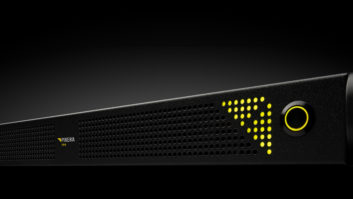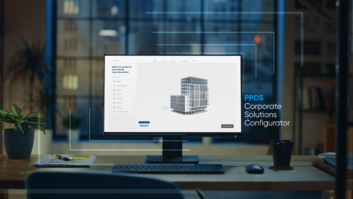
On average we pick up our mobile phones 58 times, and touch them as many as 2,617 times, every single day. For most of us, making a call, reading an email, sending a message or posting a Tweet, is something we do without thinking twice. But did you know, the average mobile phone carries up to 9,000 times more germs than the average toilet seat?
There’s more. If you use a computer or laptop, your keyboard could be up to 20,000 times dirtier than a toilet seat. Pretty disgusting! Similar statistics are prevalent when it comes to other everyday items you encounter, especially when it comes to touchscreens used in QSRs for ordering food and beverages, transportation hubs for ticketing, and point of sale displays.
The AV industry is, therefore, a potential breeding ground for COVID-19, with equipment. From professional TVs whether used in commercial settings or in the more than 15.5 million hotel rooms globally, through interactive displays in schools and businesses, LEDs, digital signage in retail and other settings, monitors and touch screens, through to remote controls – the list is endless – all require some form of human contact, be it directly (physical), or indirectly, being controlled via laptops, tablets or PCs.
Touching on interactive hygiene
Before Coronavirus was even brought to our attention as a risk, the hygiene of interactive displays has been a big concern for many. In fact, a Kiosk Marketplace report last year found that more than 70% of us were already worried about using public touchscreens. The online survey highlighted respondents that 80% of bacterial infections come from what people touch, then asked them to indicate which of a range of self-service situations concerned them most.
ATMs caused the most concern among respondents, with 72% citing bank ATMs as posing the greatest risk. Hospital check-in screens were second at 70%, followed by 58% for both QSR touch screens and supermarket self-service kiosks. Airport and hotel check-in kiosks both scored 40%.
COVID-19 and AV
Bring into focus concerns now about health and safety over Coronavirus and the importance of keeping electronic items clean, helping to reduce the risk from potentially harmful germs and bacteria, has never been more important.
The World Health Organization states that COVID-19 can be spread from person to person through small droplets from the nose or mouth which are spread when a person with COVID-19 coughs or exhales. These droplets can, if not caught, land on objects and surfaces around the person. Other people then catch COVID-19 by touching these objects or surfaces, then touching their eyes, nose or mouth.
You may also be interested in:
- Opinion: Working from home in times of crisis
- Video capture delivers health benefits
- Healthcare systems: fit for purpose?
Little is yet known about the amount of time COVID-19 can remain contagious on hard surfaces, but studies have suggested that other coronaviruses, like SARS and MERS, can stay alive for up to three hours in the air and as much as two or three days on metal, glass and plastic surfaces.
Reducing the risk of infection has always been a factor in the health sector, which is why the Philips bedside TVs include hydrophobic glass, antimicrobial casing and no raised buttons, but when it comes to hygiene, other products, including interactive displays such as the Philips T-Line range, need extra vigilance.
Taking action against unclean screens
AV In light of the current climate, Philips Professional Display Solutions offers some basic suggestions on how to help keep your AV equipment clean, reducing the potential risk of COVID-19 and any other germs. Some will seem obvious, some are already common practice, while some may provide food for thought.
The best way of killing the spread of coronavirus is through simple but effective actions, ensuring you wash your hands thoroughly (for at least 20 seconds) and catching any droplets from coughs or sneezes. The reality is, such practices are not guaranteed, nor full proof. So, what else can you do?
Wipe it off, wipe it out
For businesses offering the use of touchscreens to customers at their premises, regular cleaning is essential. Likewise, for those using touchscreens as a part of their business – installers and resellers included – there are a number of methods and products that can help:
Antibacterial wipes
The most practical method of safely cleaning an electric item is using antibacterial product. There are many to choose from – albeit in very high demand.
For displays (all types), the most effective and accessible way of fighting back against unwanted germs is through using a simple screen wipe. When searching, it’s important that you choose a brand that is designed specifically to eliminate germs (key words: alcohol, antibacterial), as opposed to simply water based (baby wet wipes) making your display look clean and shiny.
If you think a surface may be infected, or even simply for good practice, clean it and then clean your hands.
Foam
While antibacterial wipes are perfect for cleansing flat surfaces, they’re not always sufficient for equipment with multiple small parts, inaccessible areas, or even high sensitivity to moisture.
As stated before, a computer keyboard, if left untreated, is a festival of dirt and grime both above and below. A quick cough into the hand, an unexpected sneeze, bits of food and, in commercial situations, multiple users can quickly escalate the problem.
It’s recommended by many microbiologists that we should all wipe down ours desks and keyboards at least once a week, while some go even further, suggesting at least once per day. With the current climate, we’d recommend the latter – as a minimum.
For examples such as these, the use of an antibacterial non-abrasive foam will do the trick. Beware, most are not suitable for screen cleaning.
Note also that, for those tiny hard to reach areas, additional cleaning accessories, such as cleaning swabs, might be useful.
Your personal AV hygiene toolkit
There are, of course, other methods you can adopt to help reduce, if not eliminate, coming into contact with any infected surfaces:
Stylus
In addition to regular screen wipes, for those who regularly use an interactive touch display (including tablets), owning and using a personal stylus will help cut direct interaction, further reducing the risk.
Gloves
You could also, should you wish, go a step further and adopt a strict practice of wearing touch screen utility gloves, again practically eliminating any direct skin contact. Of course, it’s vital these gloves are regularly cleaned and removed before making any contact with your own body parts, i.e. scratching an eye, touching your mouth or when visiting the bathroom.
Receiving a delivery – whether from home or abroad
Of course, many people are also concerned about the deliveries they receive and the potential for these to carry infection. In the AV industry, we receive a lot of deliveries from overseas. However, the likelihood of an infected person contaminating commercial goods is marked by WHO as low and the risk of catching the virus that causes COVID-19 from a package that has been moved, travelled, and exposed to different conditions and temperature remains low.
However, a quick clean can help further reduce the risks and provide peace of mind on arrival and subsequent use.
For more information related to the coronavirus, please view the latest advice from WHO here.







